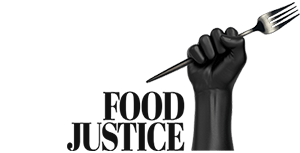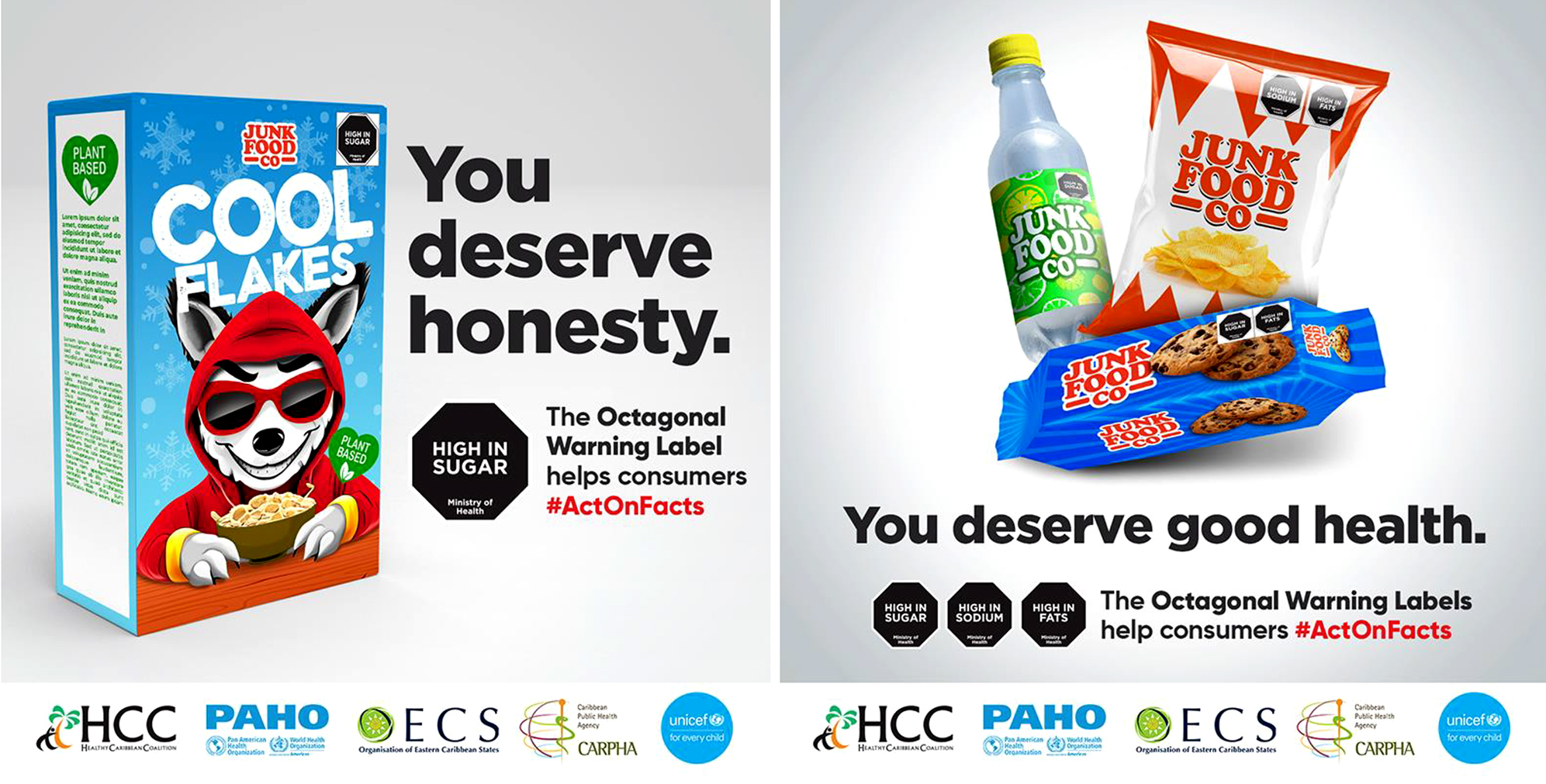
LABEL RULES
What’s eating us? Health department reviews public submissions on food label regulations

Potentially game-changing regulations affecting food labelling and marketing in South Africa have entered the final straits of decision-making before being finalised and passed into law – but getting to the finish line will not be a sprint.
The public-comment period for new food labelling and marketing regulations closed on 21 September 2023, setting in motion the finalisation process for a potentially powerful tool in reducing South Africa’s astronomical obesity, diabetes, and other non-communicable disease (NCD) burdens.
The draft regulation, called R3337, proposes mandatory black-and-white warning labels on packaging of foods high in added sugar, salt and unhealthy fats, which are known to increase the risk of obesity, type 2 diabetes – South Africa’s second-greatest cause of death – cardiovascular disease and some cancers.
A critical piece of its creation has been the scientific research that provided the nutrient profiling model that forms the basis for both the “too high in…” labelling and the restrictions on marketing of unhealthy foods to children.
Foods and drinks containing artificial sweeteners will also carry warning labels, as these too are known to increase the risk of some NCDs and may disrupt the normal functioning of the gut microbiome, with further knock-on, long-term health impacts. The regulations also stipulate restrictions on food companies’ marketing of unhealthy foods and drinks to children, which the World Health Organization has been advocating for since 2010.
R3337 has been long in the making, since an attempt to introduce similar regulations in 2014 stalled, with no explanation from the National Department of Health (DoH). South Africa has found itself way behind scores of other countries with more up to date food-related regulations intended to protect public health.
An aspect of R3337 that is ahead of some countries, though, is in the use of warning labels.
Experts consider the proposed regulation to be a major improvement on the current regulation, R146 from 2010, which stipulates only basic labelling requirements, though many food producers have taken it upon themselves to get closer to international best practice and offer more detailed nutrition information on labels than the law requires.
Warning label aspect
To international best-practice standards, the R3337 strengthens the warning label aspect, which has proved highly successful in reducing consumers’ consumption of unhealthy foodstuffs in other countries with similarly high levels of obesity and non-communicable diseases as South Africa, such as Chile (since 2012) and Ecuador (since 2013).
The protracted process on R3337 has been underway for at least two years (Daily Maverick began asking the DoH about it in November 2021).
Read more in Daily Maverick: Redefining food safety: SA’s laws governing food advertising aimed at children need to be jacked up
A critical piece of its creation has been the scientific research that provided the nutrient profiling model that forms the basis for both the “too high in…” labelling and the restrictions on marketing of unhealthy foods to children.
Several rounds of expert and internal consultation followed before the draft was first published in January 2023. (The DoH extended the usual three-month period for public comment and re-gazetted the regulation several times due to various avoidable errors in the document.)
Critics of the draft regulation includes Nigel Sunley, a food scientist and labelling consultant who works extensively with the food and beverage industry. He both commended efforts to improve consumer education about nutrition, and lambasted the DoH attempt to promote warning labels, casting doubt on whether they would influence consumers’ food choices.
“Treating food like tobacco and plastering warnings all over it is very questionable,” Sunley told Times Live in February 2023 after the draft first came out. “People like sweet things, salty things, things with fat in them. The focus on hitting people over the head for eating these things is, I think, questionable,” he said, adding that public health professionals did not understand what drove consumers’ purchases, nor the complex scientific processes involved in creating food.
Others disagree.
“The reason the DoH is doing this is not to punish anybody,” said Dr Harris Steinman, a medical doctor and CEO of FACTS, a food safety centre in Stellenbosch. “It’s to try and tackle consumer health to make sure labels and food that’s produced benefits the population and, directly, the cost of medical interventions for ill health – especially [related to] obesity and diabetes,” Steinman said. (The cost to the state of diabetes alone is projected to reach R30-billion by 2030.)
Contrary to Sunley’s assertion, the health department has drawn on years of local and global research and evidence to formulate the regulations, including consumer behaviour research conducted among focus groups in Soweto. The groups experienced and assessed different types of warning labels, so researchers could evaluate consumers’ understanding, comfort with and preferences for specific label types and approaches.

Countries such as Mexico, Peru, Uruguay and Venezuela are facing a health crisis largely driven by over-consumption of ultra-processed products. Many South American and Caribbean countries have introduced black-and-white octagonal warning labels for foods high in sugar, fat, and sodium. (Images: Healthy Caribbean Coalition)
Expert opinion
Professor Rina Swart, principal investigator and nutrition lead at the University of the Western Cape’s Centre of Excellence for Food Security, along with former UWC colleague Dr Tamryn Frank, Dr Makoma Bopape of the University of Limpopo, and Dr Safura Abdool Karim of the University of the Witwatersrand, together formed the research working group (for the DoH) that developed and tested the front-of-pack warning label approach used for R3337, with oversight by an independent advisory committee including nutrition, health, behavioural science and communication experts.
On 14 September, just before the 21 September public comment deadline, the UWC team published Five reasons to support draft labelling regulations R3337, a statement describing its public health benefits. They include that at-a-glance warning-label information will tell consumers if a product contains high levels of “nutrients of concern”; if it does, it is not allowed to carry health or nutrition claims (removing consumer doubt about claims) and children up to age 18 will be protected from marketing of these products.
Read more in Daily Maverick: WHO calls for accelerated action as obesity and diabetes rates soar in South Africa and globally
A former DoH source who wished to remain anonymous told Daily Maverick that “due to stricter requirements in terms of labelling as per the [draft] regulations published in 2023, a certain amount of pushback from this industry is to be expected”. But, the source added, “the issues addressed such as FOPL [front of pack warning label] and foods that may not be advertised or commercially marketed to children are considered global problems, and were identified” by more than one WHO guideline, and has the South African and global support of “many healthcare workers and scientists”. (The WHO began encouraging countries to use front-of-pack warning labels in 2004, and to ban marketing unhealthy foods to children since 2010.)
Department ‘to do’ list
This means the health department now needs to collate, review and decide upon which submissions are useful and valid additions or changes to the regulations, integrate those into the draft, and then finally legislate the new regulations, passing them into law.
Daily Maverick put several questions to the health department, including how many comments were received, to describe the process and timing for collating, deciding on and integrating them, as well as the timeframe for food producers to comply with them.
DoH spokesperson Foster Mohale said it was “difficult to give an exact number” because it the department is “still in the process of capturing, collating and reconciling the comments”, but a “preliminary view indicates that comments were received from individuals, companies, professional bodies, industry associations and international trading partners”.
“Substantive comments will go through an internal review and discussion, and determinations will be made on acceptance, consideration or rejection of these comments”, after which “there will be feedback” and possibly further discussion, Mohale said. He did not describe the parameters of the decision-making process, nor who would be involved in those decisions.
Mohale said that the timeframe for the final version of R3337s “can only be determined once the above processes are finalised as the substantiveness and need for further engagements is not known at this stage”. The department is currently processing comments from international trading partners, he said.
Read more in Daily Maverick: Activists call for more restrictions on marketing of unhealthy foods and drinks to children
The Food Directorate (within the DoH) envisages that the entire process would be finalised “in the latter part of the 2024/2025 financial year”, Mohale said, after which “legal will need to facilitate the gazetting of the next iteration of the Regulations”. Food producers will have 24 months to comply with the final regulations (ie. by the end of 2026/2027), though Mohale said that, too, will be reviewed “in line with the comments received and due consideration to the rationale for alternative time frames”.

South Africa’s proposed new regulation on food labelling will mandate black-and-white triangular warning labels on the front of the packaging of foods high in sugar, unhealthy fats, and/or salt, along with an exclamation mark, in a “warning” strapline. There is also a warning label for artificial sweeteners. (Image: Government Gazette No. 47965, 31 January 2023)
Still discussing…
The Consumer Goods Council of South Africa (CGCSA) declined to describe their “public comment” submissions, responding to Daily Maverick only that CGCSA was “still involved in discussions with the department and other stakeholders on the R3337. Therefore, at this stage, it is still too premature to comment”.
Andy du Plessis, managing director of food-rescue organisation FoodForward SA, said their submission on food “loss and waste” suggested that food donations – especially industry surpluses – “must be encouraged across the food system”, and that food past its “best before” date should be considered edible and usable.
Steinman described a “balancing act” that governments around the world are attempting, while trying to protect consumer health and their food industries at the same time. “The regulations are mainly to protect consumer health but also to create a level playing field for the industry to make products, to compete, and to commercially succeed.
“If we are trying to look after South Africa and save South Africans through health imperatives (such as no smoking or less sugar),” he said, “you then roll out a number of methods to implement those policies. One is regulations pertaining to foods and to make healthier foods. At the same time, you’re trying to give the market the ability to innovate and produce.” DM
The public comment period for R3337 closed on 21 September 2023. The DoH hopes the final regulation will be legislated by the end of the 2024 financial year. DM
To read more articles by Adèle Sulcas about Food Justice see:
- Studies flagging raised risk of heart attack from ultra-processed foods prompts warning of ‘tidal wave of ill health’ (1 September 2023)
- Emerging research highlights the impact of gut microbiome on overall health” (19 June 2023)
- “WHO revises guidelines as hazards of non-sugar sweeteners come under scrutiny” (21 May 2023)
- “Avoidable errors in new draft regulations on warning labels have cost South Africans more than R1m so far” (11 May 2023)





















 Become an Insider
Become an Insider
On a recent visit to UK I was impressed by the food labelling on simple basic purchases which certainly gave me pause for thought;
By actual content and % daily requirement for average adult so;
Can of Sprite Zero:
Energy 17 Kj/3kcl 0%,
Fat 0g 0%,
Saturates 0g 0%,
Sugars 0g 0%,
Salt 0.1g 2%
Ham Salad sandwich:
Energy 1618kj 586 kcal 19%
Sat Fat 4.3g 21%,
Sugars 2.9g 3%
Salt 1.2g 21%
I have the pics but cant post in this chat
It was very impressive, informed me and I was stunned that one seemingly healthy sandwich was 1/5th of my daily allowance of both energy and fats. I had it in my mind as a harmless in-between times snack – not a virtual meal replacement….
I found it helpful and informative and not intrusive nor controlling
Perhaps manufacturers and retailers should take up the baton voluntarily before the turgid regulations finally make it into law?
I am sure many people just don’t know how bad the stuff is that they put into their children (and themselves)
I provided comments on the draft Regulations earlier this year. While the intention is great, there are still some serious concerns. An error that occurred in the original draft and which was carried through each successive draft that culminated in R3337 was the attempt to repeal previously repealed Regulations! One aspect of R3337 is that DoH has brought in regulations in respect of sweeteners and, in the process, intend to repeal R3128/1991. However, this set of Regulations was replaced in 2012 by R733/2012.
I also commented on the dropping of the need to warn of the presence of MSG in a foodstuff; this requirement is in the current R146/2010.
A serious concern is the enforcement of DoH Regulations. In the Foodstuffs Cosmetics and Disinfectants Act (Act 54 of 1972), the enforcement of such Regulations was delegated to municipal health departments. As the manager of the Regulatory Compliance department of one of SA’s biggest retailers for three years (after setting up the department), I was frustrated by the DoH’s inability to police its own Regulations. One of my current concerns and source of continued frustration is the number of confectionery items slipping through Port Health inspections (part of DoH’s area of responsibility) with undeclared tartrazine which is shown in the ingredients list as Yellow 5 or E102. Tartrazine must be named explicitly in the ingredients.
Regulations are all well and good, but useless without effective enforcement.
Thank you for your inputs and information, Glyn – all points noted.
Indeed, enforcement is a huge and problematic issue – in our food system and elsewhere.
We will continue to report on this.
Food labelling is a good thing but what is more important is what has NOT gone into the process of producing the particular “food”. How many products are properly labelled “GMO”? Or listing the toxic, carcinogenic pesticides/insecticides/fungicides that have gone into the spraying of the crop(s)?
How about giving information on the refining process that removes a significant proportion of the nutrients, i.e. refined flour and refined sugar?
Of course, it is impossible to list every single detail about how the product was grown/manufactured so it is up to us to make sure that we eat healthy food that has been grown/produced as naturally as possible.
Listing the contents of fat, sugar, salt etc are generally of little use in the attempt to educate the purchaser. There are different types of fat, some healthy, some not. Same with sugar, same with salt, same with protein and carbs.
The government is not responsible for our health BUT they ARE responsible for ensuring that food packaging/labelling is truthful so that we, the consumer, can make our own minds up.
With the pushing by some billionaires to “make uz eet ze bugs” (of course, they WON’T be eeting ze bugs!), putting “vaccines” into food and “printing” meat and fish, THIS is the type of information that we must see on food labelling as well. Who in South Africa wants to eat meat that has been produced from stem cells of dubious origin?! Not me!
Thanks for the article.
Can you also look into the Jungle oat drink. Their claims on pack regarding brain support and heart health is misleading and does not conform to the labelling regulations and claims permitted for foods and drinks.